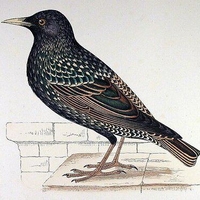Ornithological Biography, Animal Studies, and Starling Subjectivity
DOI:
https://doi.org/10.52537/humanimalia.10057Abstract
At the end of his recent book Skylark Meets Meadowlark: Reimagining the Bird in British Romantic and Contemporary Native American Literature, Tom Gannon notes the anthropocentric gall of studying birds in order to know thyself better. This notion of birds as either a means of appreciating nature or of understanding the human place in the world is a common one. Writing in 1878, Walt Whitman, after listening to some birds sing for half an hour, stated, “I have a positive conviction that some of these birds sing, and others fly and flit about here, for my especial benefit.” Is there another way of encountering birds, a way that does not interpellate them, through sight and vision, into a human realm? An examination of European Starling subjectivity can show that starlings have their own way of being in the world. They are also the ultimate companion species to humans, as their population growth parallels human alteration of the world. Starlings can be seen as an important site for thinking about the kinds of ethical relations that exist between human and nonhuman animals. In this ethical relationship, starlings have benefited immensely, as their affinity for humans has helped them to increase their range and population immensely starlings have survived and thrived in a human-created world. From a human perspective, starlings can provide a new way of thinking about and living in this world.
Downloads

Downloads
Published
Issue
Section
License

This work is licensed under a Creative Commons Attribution-NonCommercial 4.0 International License.


